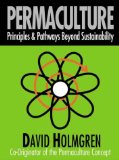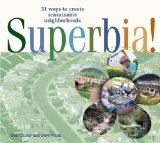| Take these actions now for a more sustainable lifestyle. |
| ABOUT US START IDEAS DO LESS USEFUL PLANTS PROJECTS VIEWS RESOURCES TOPICS |
|
|
|||
Permaculture is both a set of ideas and a way of living. It focuses on why and how to set up self-sustaining systems and processes, and it applies to many facets of society from urban design to exchanging goods and services to the way people interact with animals, down to growing as much of our own food as possible. Permaculture seeks lifestyle changes that will reduce pollution and energy use, improve health, and strengthen our spiritual connection with the earth and knowledge of our place in it. The term was coined by Bill Mollison and David Holmgren a couple of decades ago to denote "permanent agriculture", or forest gardening. Since then permaculture's many supporters have redefined the term as "permanent culture", a concept that embraces many interlinked aspects of sustainable living. Permaculture is informed by cutting-edge research and theory in ecology, the science of natural communities. It also seeks to recapture the earthwise intelligence of native and aboriginal cultures and other groups with proven sustainable lifestyles. Some of permaculture's key guidelines for designing a garden (or a lifestyle) include:
It will be obvious from the above list that the permaculture point of view favors wholistic, long-range thinking on par with the "seventh generation" approach of Native Americans, much different from (one might even say diametrically opposed to) the modern American lifestyle. Though confronting this enormous culture gap can be depressing, it does offer a broad scope of areas which we can work to change, and maybe within the wide range of possibilities will be one that really excites you. Here, in no particular order, are a few places a person could start to make lifestyle changes that move toward the permaculture frame of mind:
Here's hoping we can find joy and fulfillment in improving the world for the next (and the seventh) generation! |
 Delve into permaculture philosophy with David Holmgren, co-inventor of the concept. Each chapter of his visionary book will lead to insights and introspection about a different aspect of life. info at Amazon Meet folks in the Upper Midwest USA who are exploring and trying permaculture. Mentioned in this article:  info at Amazon  info at Amazon |
||
|
Thanks for visiting http://www.LessLawn.com! All site contents © 2001-2013 Evelyn J. Hadden, except where noted. All rights reserved. |